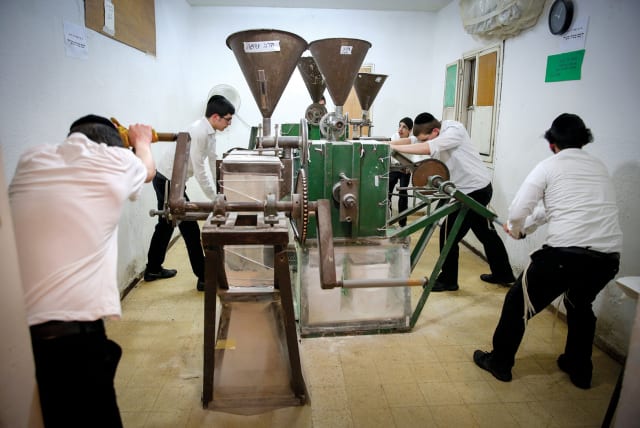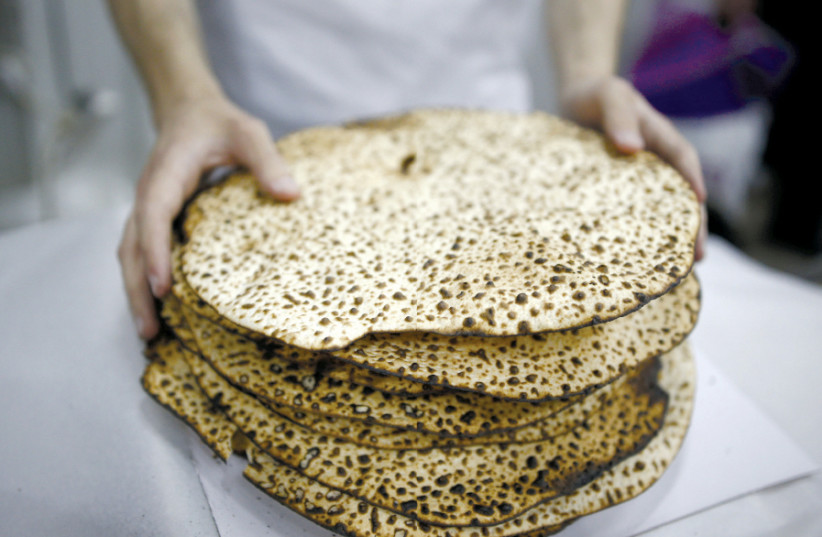The secret to successful Passover baking: It's all in the flour

Without gluten, it is very difficult to bake high-quality bread, but it is possible to bake high-quality cakes and cookies.
Successful Passover baking is challenging but not impossible. It all depends on how high you set your sights.
There are people who try to bake Passover “bread” rolls, etc. using gluten-free baking techniques that “sidestep” the absence of regular flours, yeast, etc. required for bread baking. But the results are less than spectacular and mostly not applicable to the Ashkenazi population, as flours made from beans and lentils are used, which Ashkenazim are not permitted to consume on Passover.
Actually, that is the point of Passover – that we shouldn’t eat regular bread but rather take a seven-day break in the year from our regular routine to “refresh” our hearts, souls… and our stomachs!
Most conventional Passover baking, therefore, concentrates on desserts, cakes, cookies and pies, which do not contradict the spirit of Passover and also (luckily for us bakers) do not require an essential bread-baking ingredient – gluten. Without gluten, it is very difficult to bake high-quality bread, but it is possible to bake high-quality cakes and cookies. By definition, the texture of cake and cookies is crumbly and not spongy like bread. That is the essential difference between cake flour and bread flour – cake flour has fewer gluten proteins.
I will not focus on desserts that require no flour at all, such as meringues, which are the same on Passover and year round. Instead, I will concentrate on desserts that do require flour.
An Ashkenazi baker’s Passover flour arsenal is limited to two types – matzah flour and potato starch. The trick is to optimize the mix of these two basic ingredients to obtain high-quality cake flour. Matzah flour traditionally is very coarse. In recent years, however, it is possible to obtain very finely ground matzah flour (at a price). Alternatively, you may purchase regular coarsely ground matzah flour and refine it yourself by giving it a spin in the food processor with the cutting-knife attachment, or in a coffee grinder. The end result should be close to powder.
Since matzah flour is made from ready-baked matzot, the starch in the matzah has already gelatinized during the matzah baking and will not re-gelatinize while baking your cake and cookies. It is this gelatinizing property that is necessary to “hold everything together.” For this purpose, we need to combine the finely ground matzah flour with a portion of potato starch (that has not yet gelatinized), to create a matzah flour/potato starch mix.
The optimal ratio of this mix is 2/3 matzah flour and 1/3 potato starch. For example, to make 1 kg. of this mix, you will combine 667 gr. matzah flour and 333 gr. potato starch, mixing well.
This flour/starch mix may then be used in any regular cake or cookie recipe, baking as you normally would year round. ❖
The writer, a master baker originally from Johannesburg, lives in Karnei Shomron with his wife Sheryl and four children. He is CEO of the Saidel Jewish Baking Center (www.jewishbakingcenter.com), which specializes in baking and teaching how to bake healthy, traditional Jewish bread. He also manages the Showbread Institute (www.showbreadinstitute.org), which researches the biblical showbread.
Phyllis’s Apple Walnut Cake
A scrumptious Passover (and year-round) cake recipe I learned from my mom as a child and haven’t found anything to beat it since.
- 400 gr. margarine/butter (softened)
- 2 cups sugar
- 6 eggs
- 2 tsp. baking powder
- 2 tsp. baking soda
- 1 tsp. salt
- 2 tsp. vanilla essence
- 1 cup fruit juice (mango, apple, etc.)
- 4 cups flour
- 2 apples, diced
- 1 cup walnuts, chopped
Cream the sugar and margarine/butter. Add eggs one at a time, mixing constantly. Add baking powder, baking soda, salt and vanilla, and mix well. Add flour and fruit juice and mix until the batter is smooth.
On slow-mixing speed, incorporate the apples and nuts. Pour the batter into a large (40 x 34 cm.) baking pan and bake at 180ºC for 40 minutes or until the center is solid (insert a toothpick in the center until it comes out clean).
Jerusalem Post Store
`; document.getElementById("linkPremium").innerHTML = cont; var divWithLink = document.getElementById("premium-link"); if (divWithLink !== null && divWithLink !== 'undefined') { divWithLink.style.border = "solid 1px #cb0f3e"; divWithLink.style.textAlign = "center"; divWithLink.style.marginBottom = "15px"; divWithLink.style.marginTop = "15px"; divWithLink.style.width = "100%"; divWithLink.style.backgroundColor = "#122952"; divWithLink.style.color = "#ffffff"; divWithLink.style.lineHeight = "1.5"; } } (function (v, i) { });

